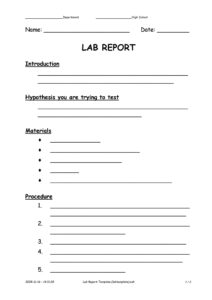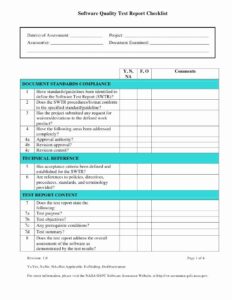So, you’ve gathered your focus group, facilitated some lively discussions, and now your head is buzzing with invaluable insights, opinions, and observations. That’s fantastic! Focus groups are an incredibly powerful tool for peeling back the layers of consumer behavior, understanding user needs, or testing new concepts. They provide a qualitative depth that surveys often can’t quite capture, giving you a real sense of the "why" behind people’s thoughts and feelings.
But here’s the thing: all that rich, qualitative data can quickly become overwhelming if it’s not organized and presented in a clear, concise, and actionable way. Imagine trying to explain hours of nuanced conversation to a busy stakeholder who just needs the key takeaways. Without a structured approach, you risk losing the impact of your hard work, and the very insights you fought so hard to uncover might get lost in a sea of raw notes.
That’s where having a robust focus group discussion report template comes into its own. It’s not just about neatness; it’s about efficiency, consistency, and ensuring that your findings translate into meaningful decisions. A well-designed template acts as your guide, helping you sift through the dialogue, highlight the most important points, and communicate them effectively to anyone who needs to understand your research outcomes.
Why a Standardized Focus Group Report is Your Best Friend
Think about the last time you tried to create a report from scratch. You probably spent valuable time figuring out what sections to include, how to structure the information, and what level of detail was appropriate. Now, multiply that by every focus group you conduct, and you can see how quickly inefficiency creeps in. A standardized report framework liberates you from this repetitive mental overhead, allowing you to focus on the actual content and analysis, which is where your expertise truly shines.
Moreover, consistency is key, especially if you’re running multiple focus groups on the same topic or across different segments. When all your reports follow the same format, it becomes incredibly easy to compare findings, identify trends, and synthesize information across various sessions. This uniform approach not only saves time but also significantly boosts the credibility and professionalism of your research efforts. Stakeholders can quickly navigate reports, knowing exactly where to find the executive summary, methodology, or key recommendations.
Beyond just saving time, a good focus group discussion report template ensures that no critical piece of information is overlooked. It acts as a checklist, prompting you to include all the necessary context, findings, and implications that are vital for making informed decisions. This structured approach helps transform raw, qualitative data into a compelling narrative that resonates with your audience and drives actionable insights. It bridges the gap between the conversations you facilitated and the strategic choices your team needs to make.
Key Sections to Include in Your Focus Group Discussion Report Template
When building your ideal focus group discussion report template, consider these essential components. Each section plays a crucial role in telling the complete story of your research.
- Executive Summary: This is arguably the most important part. It provides a high-level overview of the entire report, summarizing the purpose, methodology, key findings, and main recommendations. It should be concise enough for busy executives to grasp the core message quickly, but compelling enough to encourage them to read further. Think of it as your elevator pitch for the entire research project.
- Introduction/Background: Here, you set the stage. What was the objective of the focus group? What specific questions were you trying to answer? Provide any relevant background information or context that helps readers understand why this research was conducted and what problem it aims to address.
- Methodology: Detail how the focus group was conducted. Transparency here builds trust in your findings.
- Participant Demographics (number of participants, age range, gender, relevant criteria)
- Recruitment Process
- Discussion Guide/Topics Covered (brief overview or reference to appendix)
- Date, Time, and Location of Sessions
- Facilitator Notes (who facilitated and any relevant observations about their approach)
- Key Findings: This is the meat of your report. Organize your findings thematically, corresponding to the topics discussed in the focus group. Use clear headings and subheadings. It’s effective to include direct quotes from participants to illustrate points and add authenticity, but ensure anonymity. Look for patterns, common sentiments, surprising discoveries, and areas of strong agreement or disagreement. Don’t just list what was said; interpret its meaning.
- Recommendations: Based on your key findings, what should the organization do next? These should be actionable and directly tied to the insights gathered. Be specific and realistic, outlining potential strategies or next steps. This section demonstrates the practical value of your research.
- Limitations: Acknowledge any limitations of your research, such as small sample size, specific participant demographics, or the qualitative nature of the data. This adds credibility to your report and helps manage expectations.
- Appendix: Include any supporting documents here, such as the full discussion guide, participant screening questions, consent forms, or detailed transcripts. This provides comprehensive documentation for those who need to dive deeper.
Crafting Your Report for Maximum Impact
Once you have your template sections in place, the real art lies in filling them with compelling content. Remember that your goal isn’t just to report data, but to tell a story that drives action. Focus on clarity and conciseness. Avoid jargon wherever possible, or if industry-specific terms are necessary, explain them. Your audience might include people from various departments, so make sure your language is accessible to everyone, not just fellow researchers.
Visual elements can significantly enhance the readability and impact of your report. Think about incorporating charts, graphs, or infographics to summarize quantitative data (like participant demographics) or to visually represent thematic findings (e.g., a word cloud of frequently used terms, if applicable). Pairing these visuals with carefully selected, powerful participant quotes can bring your findings to life, making the report more engaging and memorable. These quotes offer a human touch, connecting readers directly to the voices you captured.
Ultimately, tailor your final report to your specific audience and their needs. While the core focus group discussion report template provides a solid foundation, you might adjust the emphasis or level of detail in certain sections depending on who will be reading it. For executive audiences, a punchier executive summary and clear, actionable recommendations are paramount. For product development teams, the detailed findings and participant quotes might be more crucial. Always keep your end-user in mind to ensure your insights land effectively.
Putting together a well-structured and insightful report is perhaps one of the most critical steps in any focus group research project. It transforms raw conversations into a clear roadmap for understanding and decision-making, ensuring that the valuable time and effort invested in gathering qualitative data truly pay off. This detailed output not only validates your research but also empowers your team to move forward with confidence, armed with genuine user perspectives.
Embracing a systematic approach, perhaps by customizing or adopting a robust framework for your reporting, can elevate the quality and impact of your research outputs significantly. It helps to consolidate disparate voices into a coherent narrative that informs strategy, refines products, and ultimately drives better outcomes for your organization.




